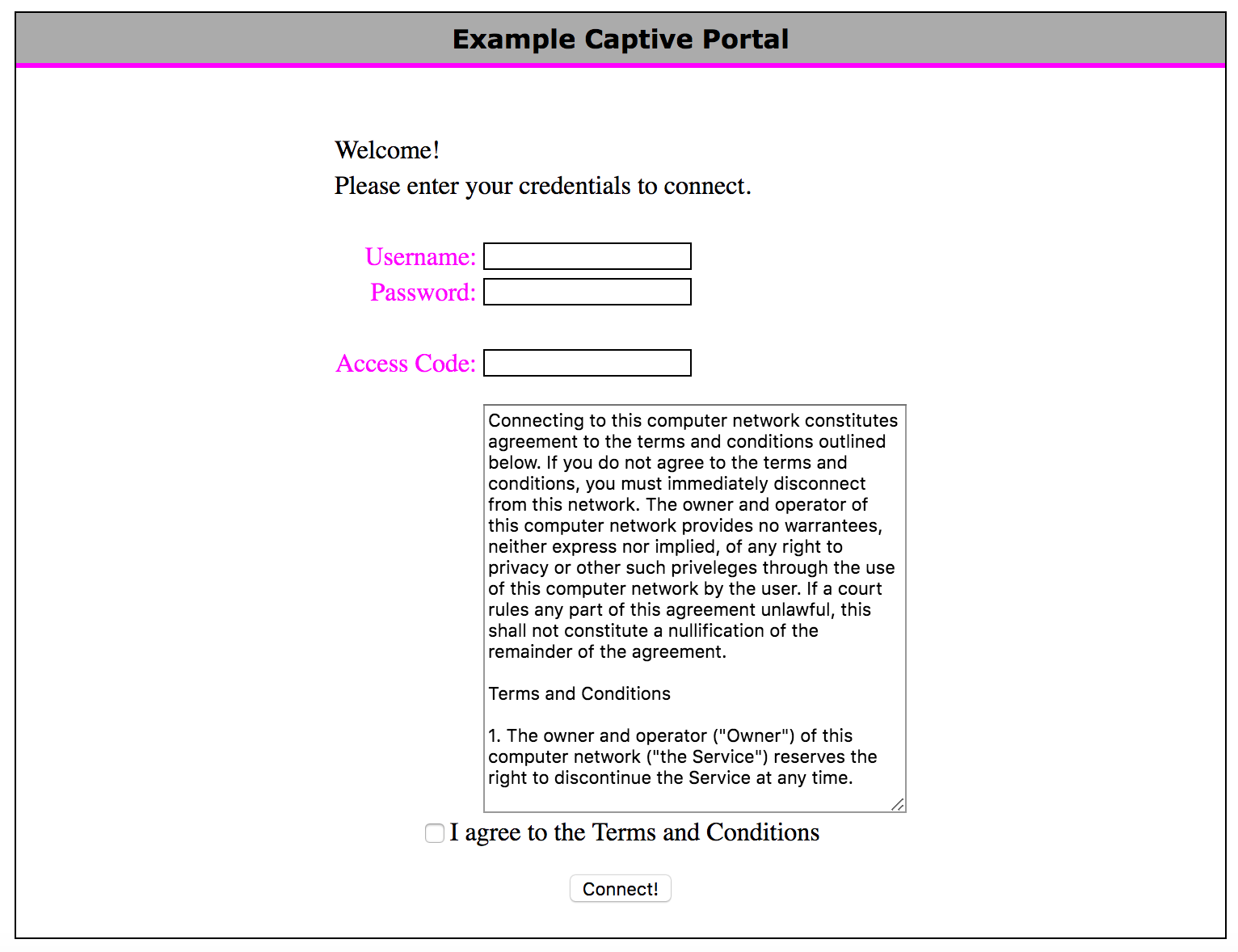Open Authentication and Captive Portals
Contents
Open Authentication and Captive Portals#
In the world of networking and internet access management, two important concepts that often come into play are Open Authentication and Captive Portals. These concepts play a crucial role in providing secure and controlled access to network resources, especially in public and semi-public environments such as coffee shops, hotels, airports, and business venues. In this article, we will explore what open authentication and captive portals are, how they work, and why they are important.
Open Authentication#
Open Authentication, also known as open access or open Wi-Fi, refers to a wireless network configuration that allows devices to connect without the need for any form of authentication or encryption. In simpler terms, it’s like leaving the door to your house unlocked – anyone can enter without needing a key. In open authentication, there is no pre-shared password or key required to connect to the network.
How Open Authentication Works#
When a wireless network is configured with open authentication, the network’s access point broadcasts its SSID (Service Set Identifier), which is the network name that devices can see when searching for available Wi-Fi networks. Users can simply select the network and connect to it without any password prompt. This type of setup is commonly found in places where the goal is to provide easy and quick access to the internet for guests or visitors.
Pros and Cons of Open Authentication#
Pros:
Ease of Use: Open authentication is incredibly easy for users to connect to. There’s no need to remember or enter any passwords.
Accessibility: Guests and visitors can quickly access the network without any hurdles.
Convenience: Users don’t need to interact with any captive portal or enter any credentials.
Cons:
Security Concerns: Since there is no authentication or encryption, data transmitted between devices and the network is vulnerable to interception by malicious actors.
Lack of Control: Network administrators have limited control over who accesses the network, potentially leading to unauthorized usage.
Legal Implications: In some regions, network operators may be held responsible for any illicit activities conducted using their open networks.
Example: Imagine a coffee shop offering open Wi-Fi for its customers. Customers can easily connect to the network without entering a password. However, this convenience comes with the drawback of potential security risks, as sensitive data transmitted by customers could be intercepted by hackers.
Captive Portals#
A Captive Portal, often referred to as a splash page, is a web page that users are redirected to when they attempt to access a public network, typically in places like hotels, airports, or cafes. The purpose of a captive portal is to authenticate users, provide terms of use or acceptable use policies, and potentially gather some basic user information before granting access to the internet.

How Captive Portals Work#
When a user connects to a Wi-Fi network with a captive portal, their web browser is automatically redirected to a specific webpage hosted by the network. This webpage displays information about the network’s terms of use, privacy policies, and possibly a login or authentication form. Users must take some action, such as clicking “Agree” or entering a code, before they are allowed full access to the internet.
Captive portals can use various authentication methods:
Simple Password: Users are provided with a password or access code that they need to enter on the captive portal page.
Voucher System: Users are given unique voucher codes that they can use to access the network for a certain duration of time.
Social Media Login: Users can log in using their social media accounts, providing a convenient authentication method.
SMS Authentication: Users receive a verification code via SMS, which they enter on the portal page.
Pros and Cons of Captive Portals#
Pros:
User Information Collection: Captive portals allow network operators to collect basic user information, such as email addresses, for marketing or analysis purposes.
Customization: Network providers can customize the captive portal page to showcase branding or promotional content.
Usage Monitoring: Captive portals enable network administrators to monitor and control network usage.
Cons:
User Experience: Captive portals can be seen as an inconvenience by users, as they need to go through an extra step to access the internet.
Privacy Concerns: Users might be hesitant to provide personal information on a public network’s captive portal due to privacy concerns.
Technical Issues: Sometimes, captive portals may not function correctly on all devices or browsers, leading to connectivity problems.
Example: Consider a hotel that utilizes a captive portal for guest Wi-Fi. When guests connect to the hotel’s network, they are automatically redirected to a login page where they need to enter a code provided by the front desk. Once authenticated, they can freely use the internet during their stay.
Importance of Open Authentication and Captive Portals#
Both open authentication and captive portals serve vital roles in providing controlled and secure access to public networks. Open authentication is simple and convenient for guests but lacks security measures, making it more suitable for casual internet browsing. Captive portals, on the other hand, enhance security by requiring some form of user interaction before granting full access. They also allow network operators to communicate terms of use and collect necessary data for analysis.
For businesses and establishments, implementing these concepts appropriately depends on the balance between user experience and security. Open authentication might be suitable for a café where customers just need quick internet access, while a hotel or airport might opt for a captive portal to ensure both security and regulatory compliance.
Final Words#
Open authentication and captive portals are valuable tools for managing public network access. Open authentication offers ease of use but comes with security risks, while captive portals enhance security and user information collection at the cost of added user steps. Understanding their differences and applications can help organizations make informed decisions about network access management.
